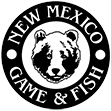Warm Water Regulations
General Information
Warm-water fish, also known as spiny-ray fish, include species such as largemouth bass, smallmouth bass, walleye, catfish, sunfish, white bass, and striped bass. Many of these fish occur wild in self-sustaining populations throughout New Mexico. Some of these populations depend on supplemental stocking. Each year, NMDGF stocks thousands of largemouth bass and channel catfish and millions of walleye fry to increase and improve angling opportunities.
Click the tab headings below to learn more about limits, bait, and trotlines.
Limits
Reference (2022-23 NM Fishing Rules & Info, p. 26)
Bag and Possession Limits
| Black Bass : Largemouth and spotted: 14-inch minimum size limit. Smallmouth: 12-inch minimum size limit. Smallmouth at Conchas Reservoir and Ute Reservoir: 14-inch minimum size limit. |
5 per day |
| Catfish (all species, except bullheads and Special Summer Catfish) 15 per day In the Animas River and San Juan River, in San Juan County, there are no bag or possession limits. | 15 per day |
| Crappie | 20 per day |
| Striped Bass: In the Animas and San Juan Rivers, in San Juan County, there is no bag or possession limit. |
1 per day |
| Northern Pike: In Eagle Nest Lake, there are no bag or possession limits. Northern pike may not be returned intentionally to the ake. |
10 per day |
| Tiger Muskie: 40-inch minimum size limit. Found only in Bluewater Lake and Quemado Lake. |
1 per day |
| Walleye | 5 per day |
| White Bass and Hybrid Striped Bass (Wipers) | 25 per day |
| Yellow Perch | 30 per day |
| All other warm water game fish: (bluegill, sunfish, bullheads) |
20 per day |
| Possession Limit: The possession limit for each species is twice the daily bag limit.. | |
Bait
Reference (2022-23 NM Fishing Rules & Info, p. 7)
Bait and Baitfish
Possession of and use of any baitfish while fishing is illegal, except as defined below. Baitfish may not be used in Special Trout Waters, Bitter Lake National Wildlife Refuge or Bottomless Lakes State Park. Bluegills and sunfish (genus Lepomis) taken legally by angling may be used as live or dead bait in the water where taken.
Commercially packaged and processed dead fish are not considered baitfish and are approved for use in all waters where the use of bait is legal. Roe, viscera, and eyes of game fish taken legally may be used in all waters where the use of bait is legal. Chumming is allowed in all waters, except Special Trout Waters. Goldfish or bullfrogs (including larval stages, i.e. tadpoles) may not be used as live or dead bait in any waters. Salamander larva (waterdogs) may be used in all waters where the use of bait is legal.
Live and dead baitfish use exceptions
Live and/or dead baitfish are approved for the drainages and waters listed in the table below. This includes all waters (for locations in table only) where the use of bait is legal.
Approved live and/or dead baitfish locations
Rio Grande Drainage: Fathead minnow, red shiner and shad
Elephant Butte and Caballo reservoirs: Fathead minnow, red shiner, shad and golden shiner
Canadian River Drainage: Fathead minnow, red shiner, white sucker and shad
San Juan River Drainage: Fathead minnow and red shiner
Gila River and San Francisco River Drainages: Fathead minnow only
Pecos River Drainage (excluding Bitter Lake National Wildlife Refuge and Bottomless Lakes State Park): Fathead minnow and red shiner
Approved dead-only baitfish (cutbait) locations
Statewide: Common carp
Heron Reservoir: White sucker
Taking Minnows
Baitfish may only be taken for personal use and only by anglers who are currently licensed or 11 years of age or younger. Permitted methods for taking minnows include: angling, dip nets, cast nets, traps and seines. Seines may not be longer than 20 feet, and the mesh size may not be larger than 3/8-inch square. All protected species of fish (including endangered and threatened species) taken with seines, nets, and traps must immediately be returned to the water.
Trotlines
Reference (2022-23 NM Fishing Rules & Info, p. 25)
Trotline or Set Line Use
A trotline (throw line, limb line, set line, jug line, or “Yo-yo” line) is a line without a rod or reel attached. It does not need to be handheld nor closely attended. Trotlines are limited to 25 hooks. Trotlines belonging to two or more people may not be joined or tied together. Anglers may not fish with more than one trotline. Anglers may not check, pull up, or tamper with the trotline of another person. Any person using a trotline must attend it personally at least once every calendar day and remove or release all game fish that are caught.
A person fishing with a trotline must attach an identification tag that is visible above the water line. The identification tag must list the angler’s Customer Identification Number (CIN). Anglers 11 years of age and younger must list their Customer Identification Number (CIN) or their name and date of birth on the identification tag.
Trotlines may be used to take game fish only in the river reaches and lakes listed on page 25.
